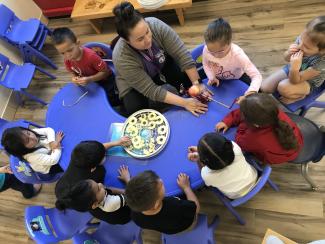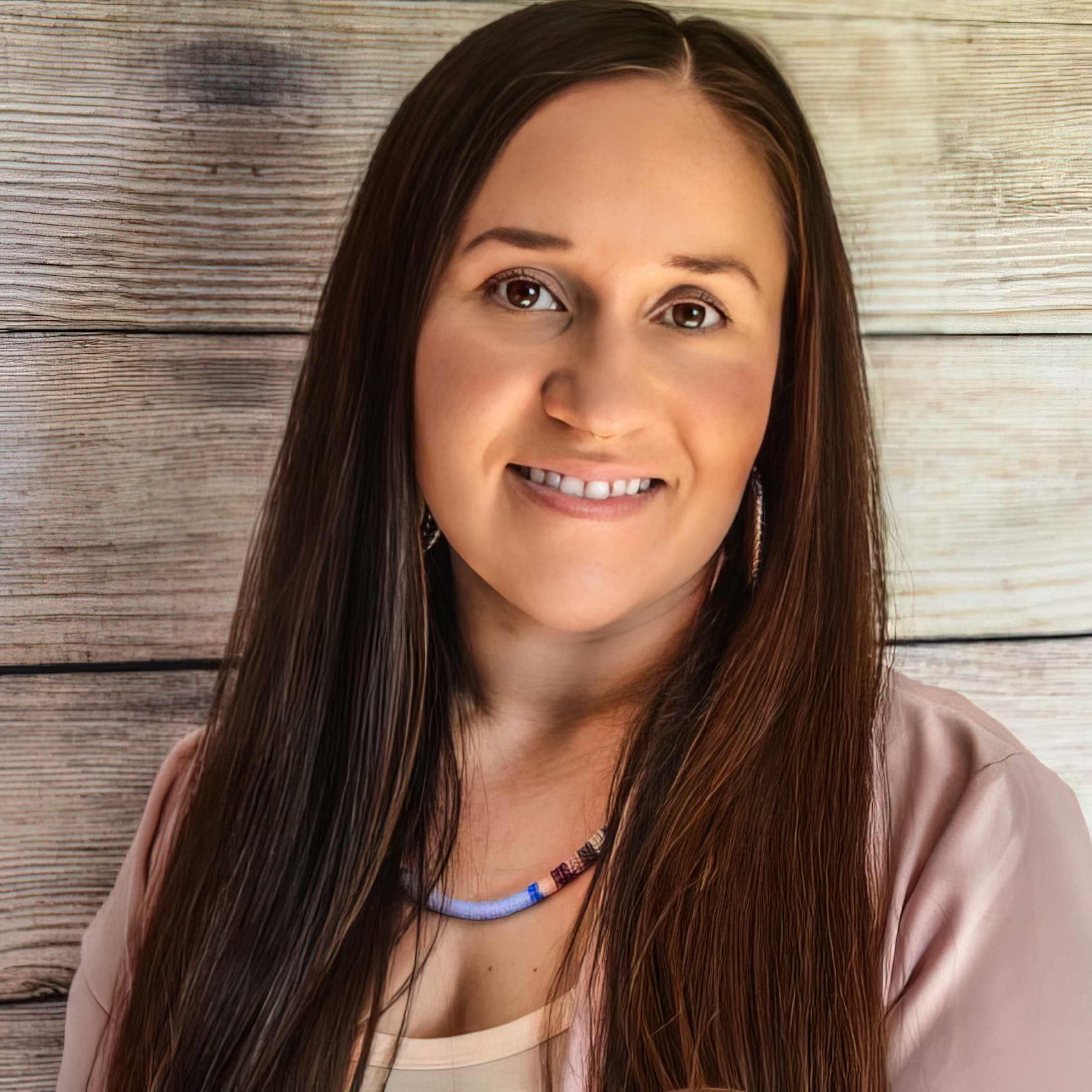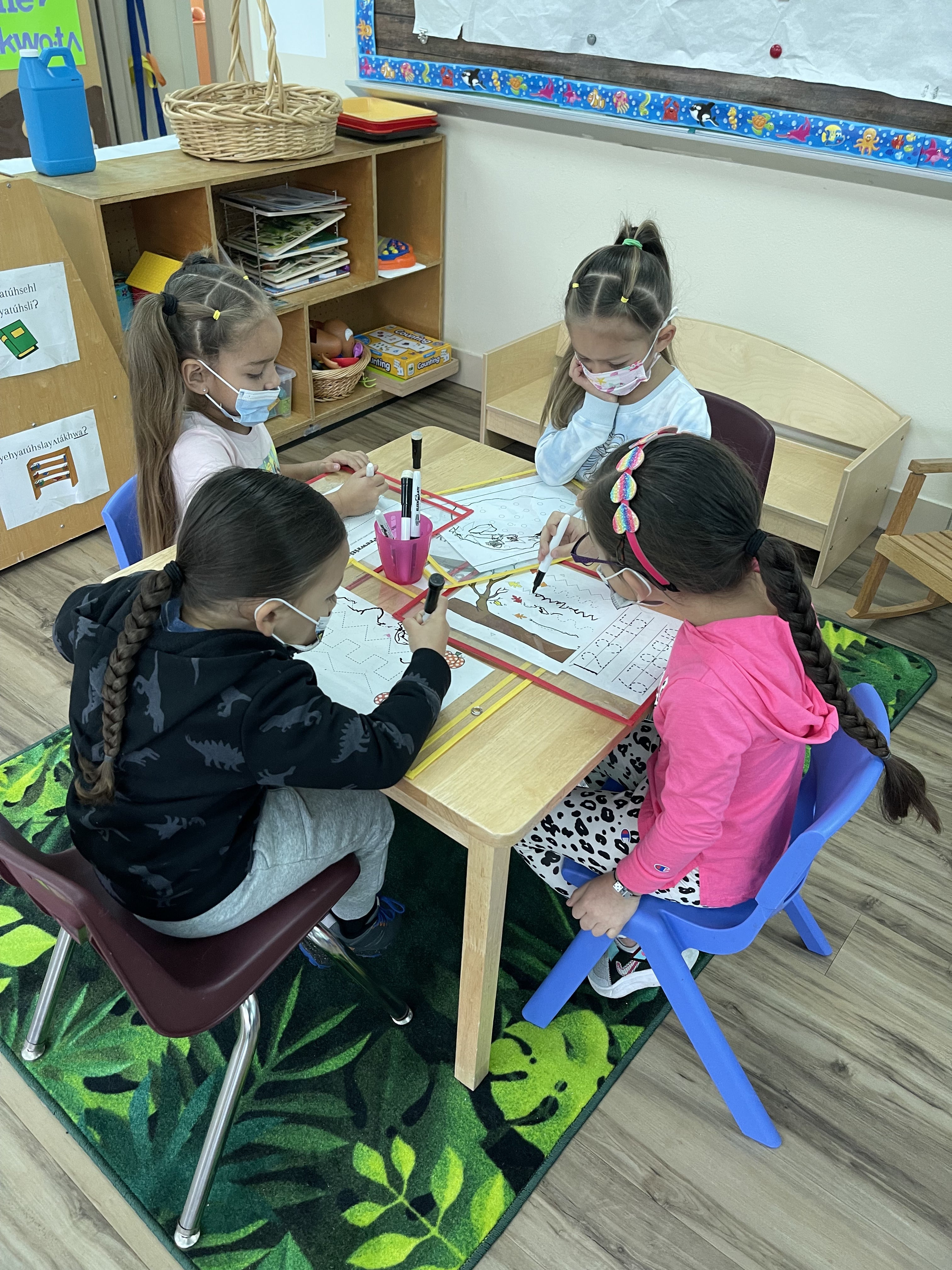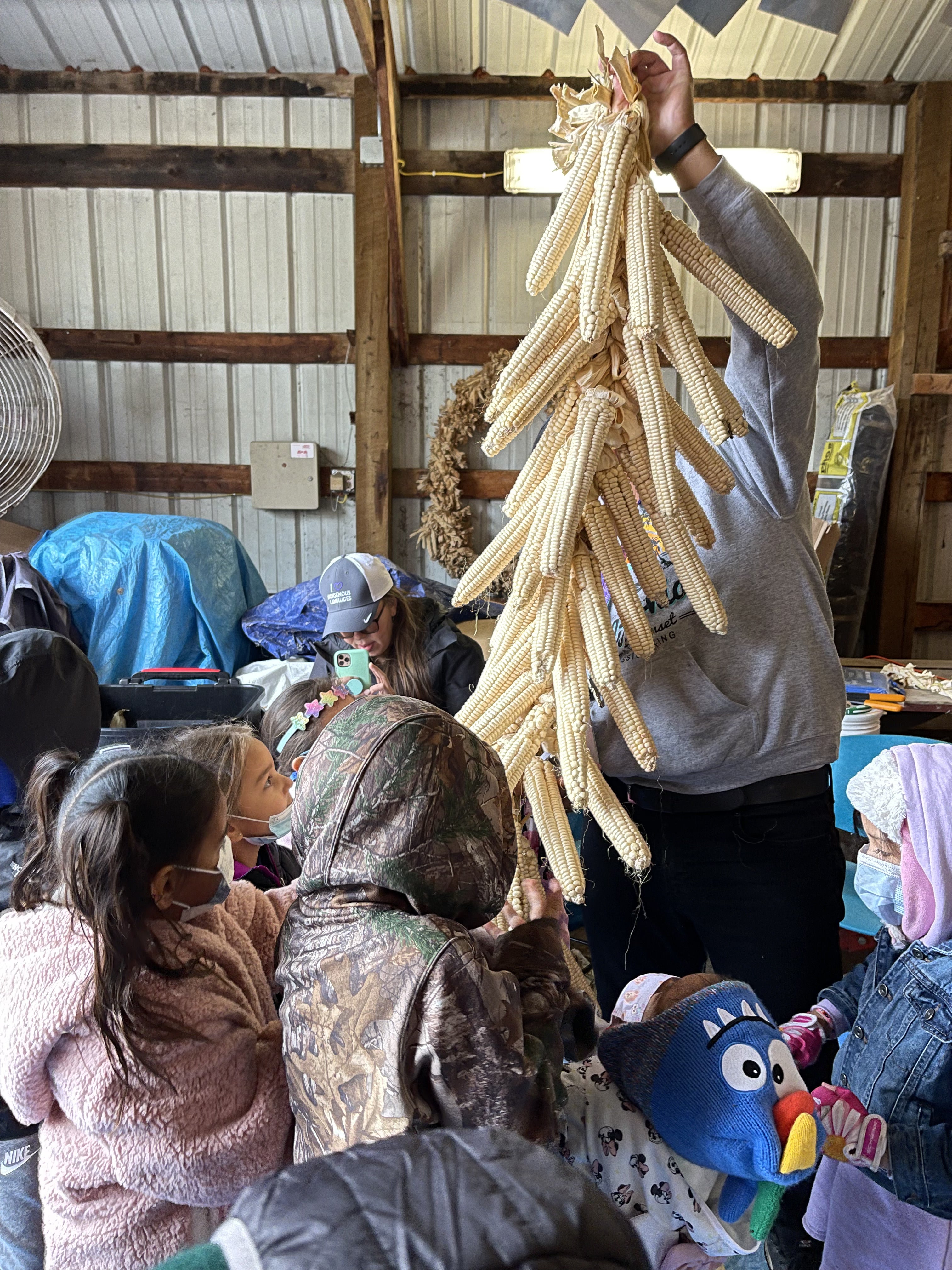
Dr. Yekuhsi•yó Rosa King is an enrolled member of the Oneida Nation of Wisconsin and a member of her Nation’s Turtle Clan. She was born and raised on the reservation and has been learning the Oneida language for over 10 years. She is a licensed American Indian Language teacher by the Wisconsin Department of Public Instruction and is currently a lead instructor in the TehatiwлnákhwaɁ Language Nest Immersion Program, which serves students ages 3-7. King has a bachelor’s degree in American Indian Studies from the University of MinnesotaTwin Cities, a master’s degree in Tribal Administration and Governance from the University of Minnesota-Duluth, and an Ed.D. Doctorate in First Nations Education from the University of Wisconsin-Green Bay with a focus on Indigenous language immersion education. Prior to working at the TehatiwлnákhwaɁ Language Nest Immersion Program, she taught the Oneida language in a local public school district for grades K-12 and also taught adult learners at the College of Menominee Nation Green Bay. King is also an artist and has a background in traditional Iroquois arts, specifically sewing regalia, moccasin making, and raised beadwork. Daisee Francour (Oneida) recently spoke with Dr. King about her language revitalization work.

Dr. Yekuhsi•yó Rosa King
Daisee Francour: What is a language nest?
Yekuhyiso Rosa King: A language nest is an immersion educational program geared towards children [age] zero to eight that uses only the target language as the sole medium of instruction. However, language nests vary within different Tribal communities. In our Tribal community, we serve students in preschool and in a K-1 combined classroom. That is a prime age for influencing the students not only in their physical development, but their social, emotional, mental, and spiritual development; they’re like sponges at that age. We teach everything to students in Oneida, whether that be social skills or things that are more content-based, like letters and numbers and colors. Our main goal is to create speakers and to boost the speakership and the proficiency of Oneida through a holistic, cultural, ceremonial-based approach and curriculum within our educational programming.
I am a lead instructor in our younger classroom. We call it the seed classroom, or the Ka•nлheɁ nikлtsyokwó•tл. They’re three and four years old. I’ve been doing this for four years, since the program began. I was actually the first teacher when we only had one teacher, and now we have six. We have one lead instructor and one co-lead instructor in each classroom. The lead instructor generally has a higher proficiency, but they’re paired with a colleague to help boost their proficiency to serve as a communication example for students to learn from, and also to work together to help serve our students. Team teaching is very beneficial to students. It’s beneficial to the group of teachers, and it helps alleviate a lot of the business of running a classroom. I’m also head instructor of the entire program and a liaison to the administration and parents. I train all the teaching staff in pedagogy immersion instructional skills as well as Oneida language proficiency and comprehension, so that they’re fully prepared to be implemented into a class within one or two years time to take on the roles of a lead and a co-lead instructor in each new classroom that we add.
In our classrooms, students learn a variety of cultural and holistic mathematical and science content. We apply a theme approach. Our program is very hands on and incorporates outdoor education as well. For example, during planting season students learn about the planting cycle, what is needed to grow a plant, the different parts of a plant, how to plan and organize a garden, and our traditional agricultural planting methods. Math, science, and emerging literacy skills are woven into each lesson. They also learn social skills, and how to use the language to express themselves in a social setting. Each day is a combination of content, play, social skills, life skills, and everything in between. All of those things combined together make a solid foundation for students and sets them up for success in their lives.
DF: Why is language revitalization so important to Indigenous communities?
YRK: Language revitalization is incredibly important because it contains our worldview of who we are as Indigenous Peoples. It is the key to our culture, our history, to connecting with our ancestors and all these spiritual and metaphysical aspects around us. It is a central part of our identity and shows us and tells us who we are as an Indigenous Peoples. Indigenous languages are important because it’s how we transfer knowledge, communicate, and connect with our culture.

Students working on a fine motor skills worksheet.
DF: Why is language immersion such an essential part of language revitalization?
YRK: Indigenous language immersion is one of the most successful language revitalization techniques. It can literally bring a language back to life in communities that have no speakers. It’s proven to boost proficiency, comprehension, speakership, and creates speakers of an Indigenous language. Even though our program has only been in existence for four years, we have already seen a lot of success in the speakership of our students, staff, and families. We’ve seen an increase in awareness about the importance of our language. We’ve seen discussion and dialogue about the importance of funding language immersion programs. That’s really key because we can’t have these programs if we don’t have adequate funding.
Teacher training is a critical aspect of immersion programming. There are no places that teach you how to be an Oneida language immersion instructor, so for us, we have to do teacher training in-house. In addition to teaching our students, our program also has a secondary education aspect which is teacher training. Language immersion needs funding without strings attached or reporting, and we need to support these programs wholeheartedly. I work in a program that’s grant funded, and we have so much extra work to do in addition to literally saving our language. Because we are fully grant funded, we have reports to write and have to monitor every single thing. Eliminating some of those things would make our jobs easier so we can focus on what matters, and that’s teaching and learning the language for our students and our children.

Students learn to process heirloom white corn.
DF: What are some of your hopes and aspirations for the International Decade of Indigenous Languages (2022–2032)?
YRK: It’s very important to celebrate this decade, but there’s more that’s needed than just a celebration of Indigenous languages. To celebrate, we have to acknowledge them, but we also have to fund them. We have to give them the funding for adequate teacher training and resources in order to best serve their students. It has to be more than just words. We need inclusive educational policy change to include Indigenous language programs as adequate, valuable, and equitable educational programs, and to acknowledge them as a form of education so that Tribal communities can administer these programs and choose however or whatever way they want to educate their children in their community.
An aspiration for this Decade is pushing the dialogue further. Let’s discuss the needs about Indigenous languages in our communities, Indigenous communities across the world, and also ensure that Indigenous communities are in the driver’s seat, that they are leading the conversation. Indigenous Peoples know what is best for their community. They know the needs of these programs. Teachers, specifically immersion teachers, really know what the needs are of a program. They should also be at the forefront of these conversations.
I have a lot of hope for the future for Indigenous languages. I know my community, and we will make it happen no matter what. We are so driven and passionate about our language. Our language literally is a medicine. It can be used to heal all of these social issues that affect our community. Drugs, alcohol, substance abuse—those are serious issues that plague our communities. Culture and language programming boosts identity. It provides a solid foundation for a person that can be used to help combat things like substance abuse, and be used to heal from them as well. I’ve seen a lot of progress in our community in terms of where we’re going with our language. I’m excited because things are coming full circle. You can see it happening in our community right before our eyes. Students are learning. They’re speaking from nothing, the language that has been out for generations before them. But we’re bringing it back through our language nest.
Top photo: Dr. King shows her students how to process and dehydrate apples.
All photos courtesy of Yekuhsi•yó Rosa King.
